Compared to other destinations in Indonesia like Bali, the capital city Jakarta may not be your first choice, even if you plan to just travel around Java.
Contrary to popular belief, I think skipping Jakarta in your Indonesia itinerary will be a big mistake since when it comes to infrastructure and places to go, the capital city of Indonesia has so much to offer if you don't take horrible traffic jams into consideration.
Even with that, public transportation in Jakarta is hands down the best in the country, making it easier for you to get around and explore the best places to visit in the capital city. You don't have to stay in the city for too long, as 2 days in Jakarta will be enough for you to spare and explore the city on a budget.
In this post, I'm going to share my favorite 1-day itinerary in Jakarta, Indonesia, so you can explore all the best spots around the city without breaking the bank. Let's dive in!
Jakarta Travel Guide: How to Spend a Day in Jakarta, Indonesia
Compared to other capital cities in Southeast Asia like Kuala Lumpur or Bangkok, Jakarta may not have the best reputation in terms of public facilities and traffic conditions.
Whoever complained about traffic jams in Kuala Lumpur or Bangkok will be humbled as soon as they arrive in Jakarta, but compared to the other cities Jakarta is also one of the most affordable places to live in Southeast Asia. You can go far in Jakarta as a traveler, even if you only have $10 USD in your pocket.
$10 USD is equivalent to IDR 150,000, and you can visit some of the best places to visit in Jakarta without spending extra. In this 1-day Jakarta itinerary, here's where to go in Jakarta on a budget!
How to Get Around in Jakarta, Indonesia
The best thing about traveling to Jakarta in Indonesia is that the capital city has the best public transportation system in the country.
With Jaklingko, all public transport options are pretty well integrated from angkot, TransJakarta bus, commuter rail, to MRT and the airport rail link that connects the Greater Jakarta area, which includes nearby cities like Tangerang and Bekasi.
Even if you're sceptical about their public transport, ride-hailing apps like GoJek or Grab are also reliable and affordable to get around the city. In addition to those big brands, you can also use some other apps like Maxim or InDrive.
Jakarta Itinerary for a Day in the Capital City of Indonesia
Are you planning to explore Indonesia's capital city for a day? Check out some of these places in Jakarta you can visit in a day!
Morning to Afternoon – Jakarta Kota / Jakarta Old Town
If you're not sure where to stay in Jakarta, I'd highly recommend choosing an accommodation around Central Jakarta area. If not, you can also prioritize booking a place to stay near Jakarta Kota.
My personal recommendation is Grand Dafam Hotel in Ancol, since it's located only around 15 minutes from our first destination: Jakarta Old Town.
Alternatively, you can also search for a hotel near KRL (commuter rail) or TransJakarta station. For TransJakarta, you can take the Corridor 1 bus with the route Blok M-Kota and it costs you only IDR 3,500. Flat rate.
As for KRL, you can take the train to Jakarta Kota. And if you stay around central Jakarta, it will only cost you IDR 3,000 until the last station. You can even go to Bogor for IDR 5,000 with the latter!
So, what are the must-visit spots in Jakarta Old Town?
Jakarta History Museum

Assuming you arrived to Jakarta Kota around 9 in the morning, you could make the Jakarta History Museum your first destination. Why? Because it's basically the biggest building in the area.
Locals are more familiar with the name Fatahillah Museum as the area around the museum is called Fatahillah Square. So, what's so special about this museum then?!
The entry ticket to this museum is flat for both local and international tourists. Only IDR 5,000 for adults!
The building itself used to be the city hall of Batavia, the former name of Jakarta during the Dutch colonial era. It was known as Stadhuis, built in the 16th century.
Stadhuis used to be the administrative headquarters of the Dutch East India Company (VOC), which later on would be the Dutch Colonial Government ever since it was initially constructed in 1707.
For the locals, the museum is infamous for its dungeon, which had been used until the mid-1800s. And just like every dungeon around the world, there are a lot of urban legends related to the building!

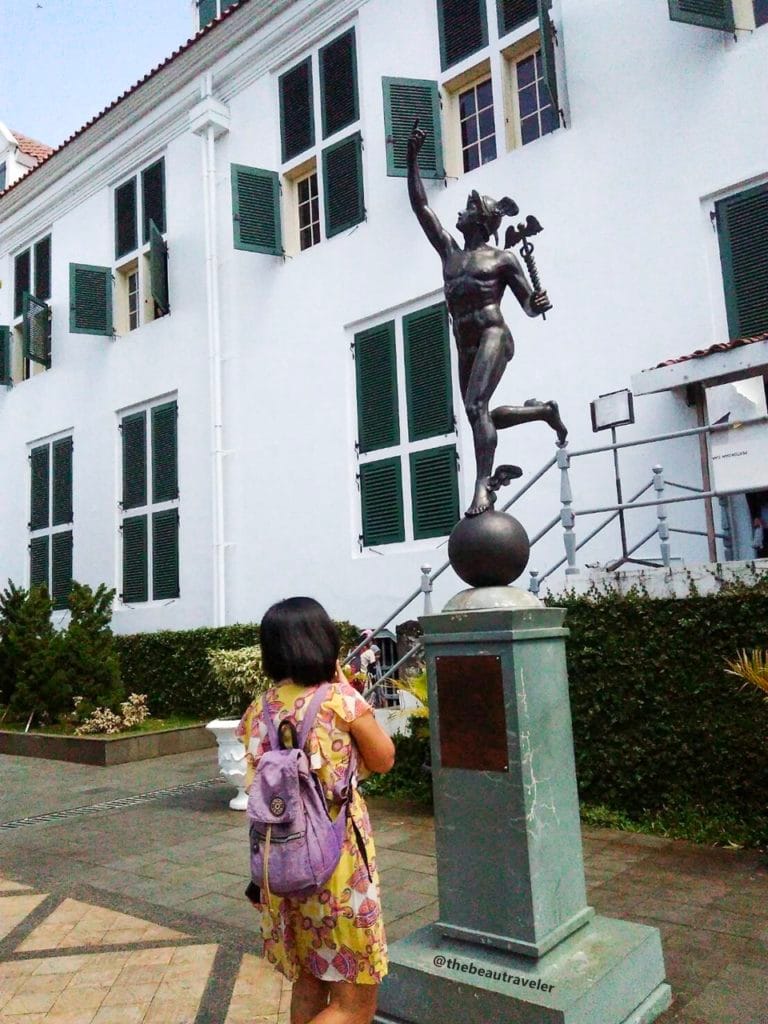
Not to mention that Fatahillah Square was also used as the place of death executions back in the day.
Apart from the dungeon, when I visited the museum recently, they added some exhibitions about Jakarta history in general. From the inscription replica from the Tarumanegara Kingdom that once ruled the current Jakarta area in around 350 AD, to some other exhibitions from the most recent history of the city.
Wayang Museum

At first, I really thought that this museum would be full of traditional Javanese puppets since it is named after wayang, Indonesian-style traditional puppet.
As it turns out, not all of the collections in this museum are traditional since there are also some modern puppets, as well as those from pop culture.
The entry ticket for this museum is also flat for either local or international tourists: only IDR 5,000!

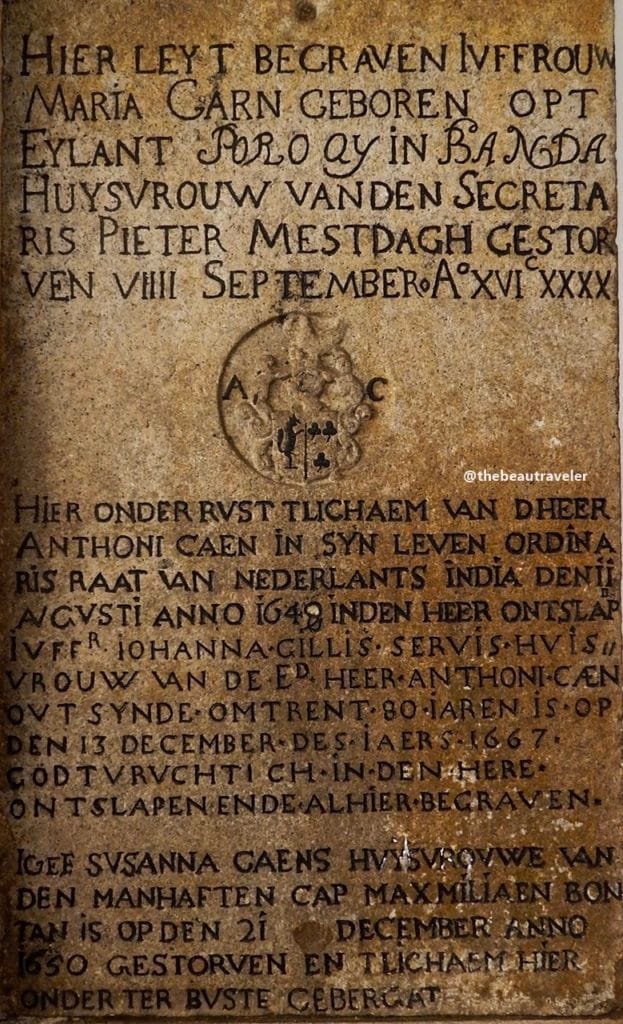
Pretty much like Fatahillah Museum, as a local, I've also heard some urban legend stories about this museum. After learning about the history of the old building, then no wonder that if there are some urban legend stories surrounding it.
The museum building was once the Old Dutch Church, and in the former yard area, there was also a small cemetery full of tombstones. One of them was the famous Jan Pieterszoon Coen. The latter was the first governor-general of VOC, who was also known as the founder of Batavia, Jakarta's name under VOC governance.
Lunch at Kedai Seni Djakarte
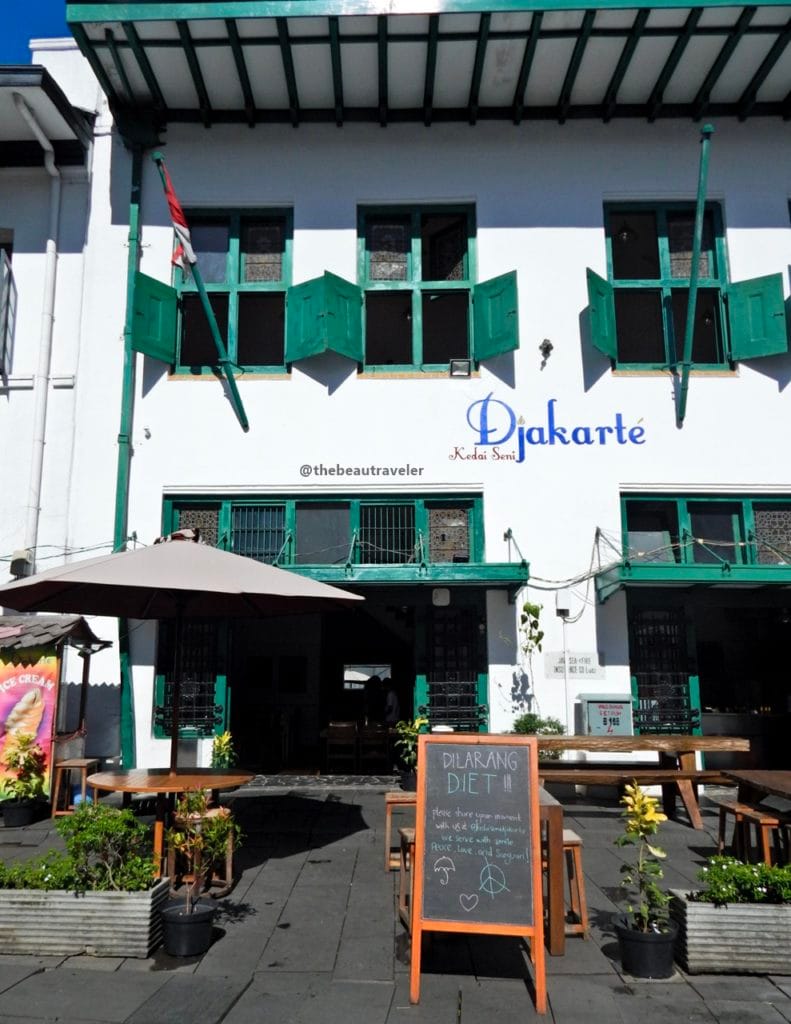
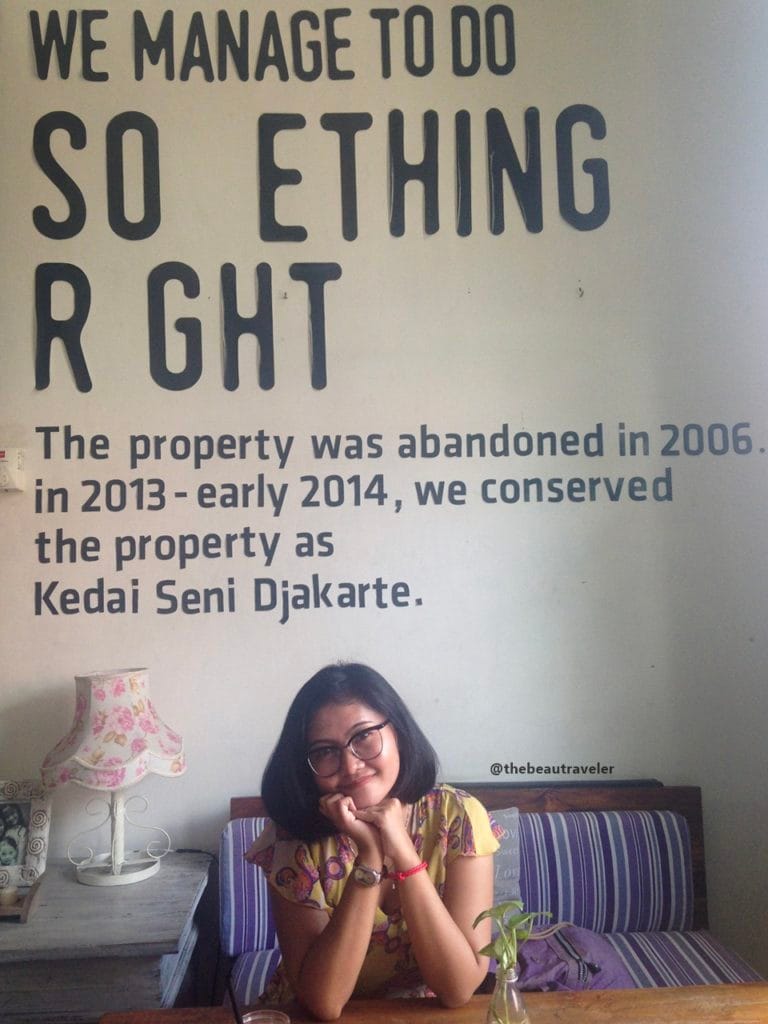
Apart from Jakarta History Museum and Wayang Museum, you can also find the Museum of Arts and Ceramics in the same area. Otherwise, you can also stroll around the area to experience the vibrant life of Jakarta Old Town.
If you're looking for a place to eat in Jakarta Kota, I'd highly recommend Kedai Seni Djakarte since they offer various types of menu, from Indonesian to western at such a budget-friendly rate.
For those who have an extra budget to spare for food, I also recommend having lunch at Cafe Batavia in front of the Jakarta History Museum building.
Bank Indonesia Museum



Walk a bit for around 200 more meters from Kedai Seni Djakarte, and you will find yourself in front of the Bank Indonesia Museum.
Founded by the Indonesian central bank in 2009, I find Bank Indonesia Museum as one of the most well-maintained museum buildings in Indonesia. The facilities and the exhibitions are top-notch, and it's definitely worth your time when exploring Jakarta Old Town!
The entrance fee is the same as the last two museums, for only IDR 5,000 you will get a chance to learn more about the country's economy, trade, and banking history in general.
If you're a banker or a student majoring in economics, I suppose you would find the museum quite interesting as it shows you the payment system that has changed over time in Indonesia. Starting from spice trading, spice monopoly by VOC, until the use of our current local currency, the Indonesian Rupiah.
Toko Merah
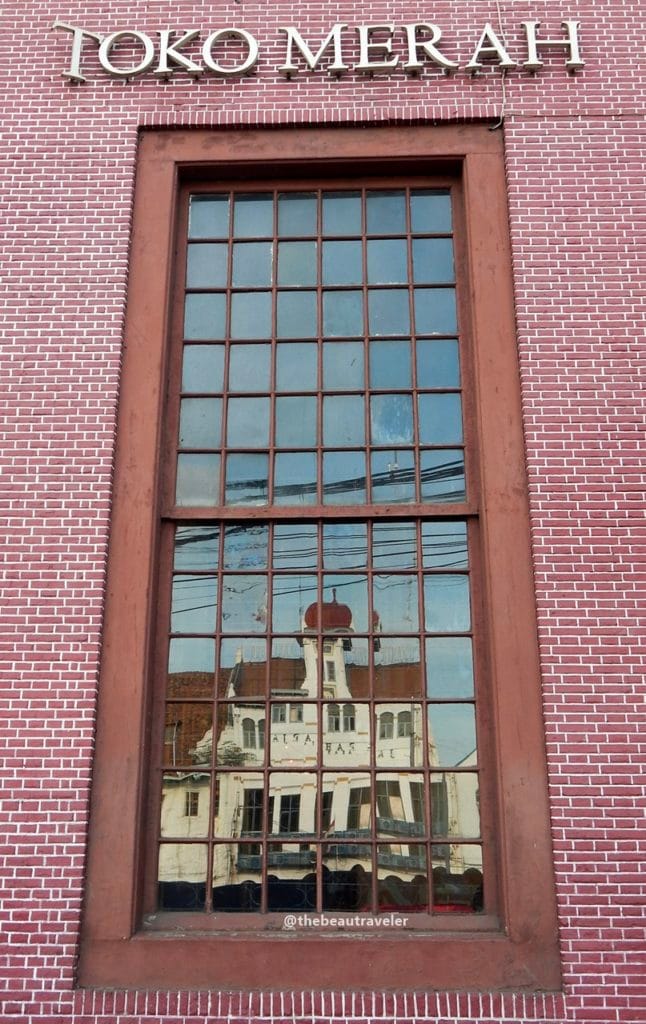
Are you the kind of traveler who always looks into the idea of taking nice pics in some instagrammable area?
Then walk around 300 meters from the Bank Indonesia Museum to Kali Besar area, as you could find an instagrammable building there called Toko Merah.
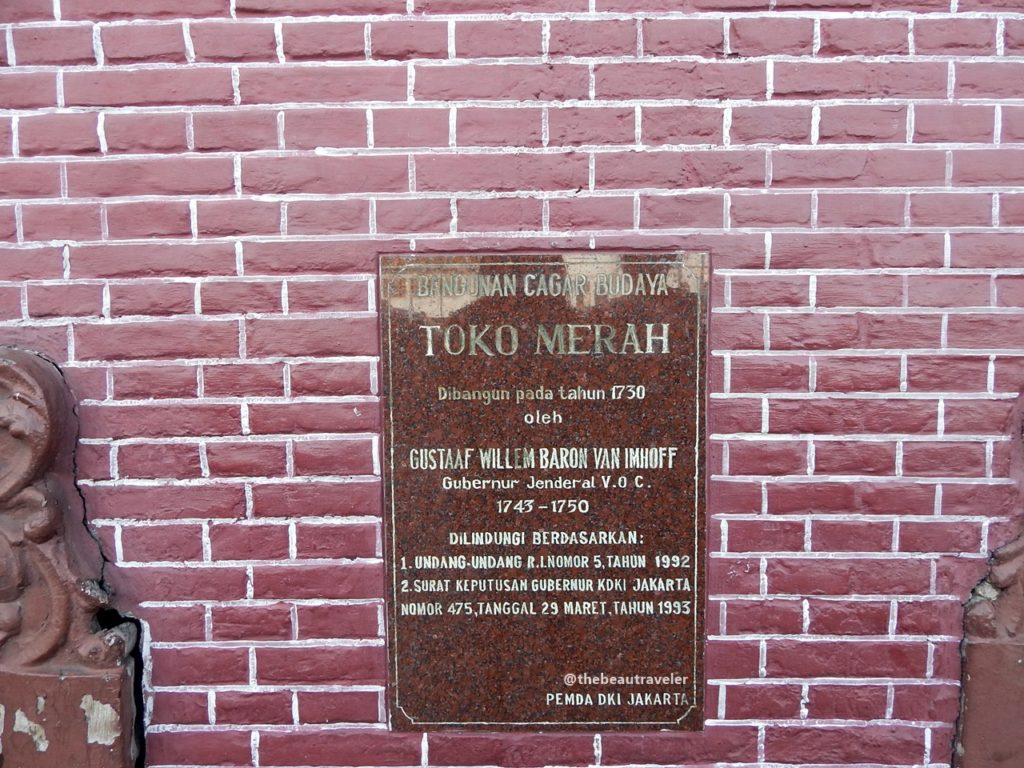
Made of solely red bricks, you would easily recognize the building once you got there. You can't enter the building, but it's one of the heritage buildings in Jakarta, where a lot of people go there to take some decent pics for free.
As one of the oldest buildings in Jakarta Old Town area, the building was once the residence of the VOC governor-general Gustaav Willem in the mid-1700s. Ever since then the building has changed its residents until it was purchased by a Chinese-descent trader, Oey Liauw Kong, who eventually transformed it into a house and a shop.
The building no longer operates as a shop, but apparently people can book it as a venue for weddings and other special occasions.
Afternoon to Evening: Central Jakarta Area
After exploring the Jakarta Old Town area, it's time to head to the Central Jakarta area. For the cheapest alternative, you can take a TransJakarta bus from Kota station and stop at the Museum Nasional (National Museum) station.
While the National Museum will be on the list of our itinerary in Jakarta, I'd recommend booking a GoJek or Grab to Taman Prasasti Museum first just because the cemetery is only open until 3 PM.
Taman Prasasti Museum
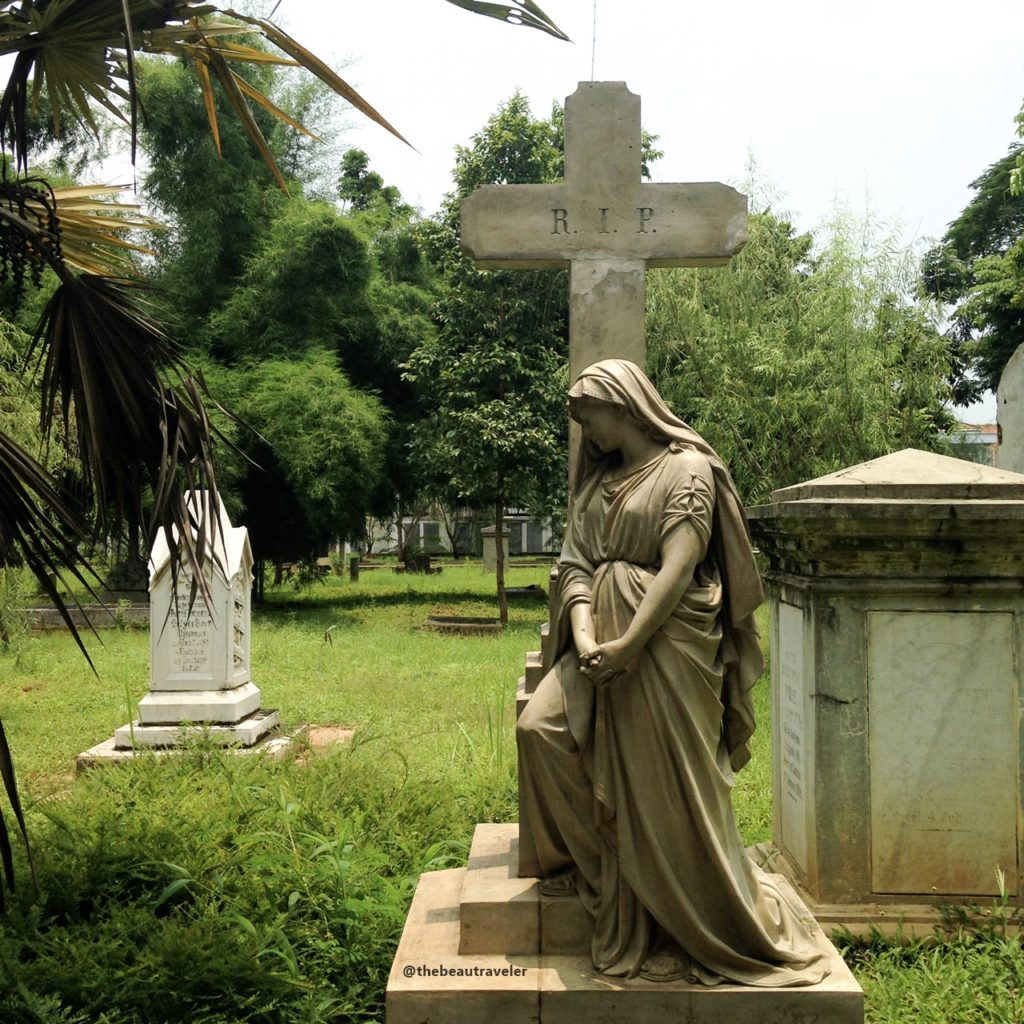
The Dutch colonial government initially constructed Taman Prasasti Museum, which is Indonesian for Inscription Museum Park, as a cemetery to serve as the final resting place for the Dutch noblemen in the late 18th century.
As mentioned earlier about the small cemetery at Wayang Museum, apparently some of the tombstones there were relocated to this cemetery as well.
However, my personal interest when it comes to Taman Prasasti Museum was to actually find one of the most notable tombstones for Indonesians: Soe Hok Gie's.
For those who don't know, he was an Indonesian activist with Chinese descent who openly opposed the dictatorship of our first two former presidents in the 1960s: Soekarno and Soeharto.
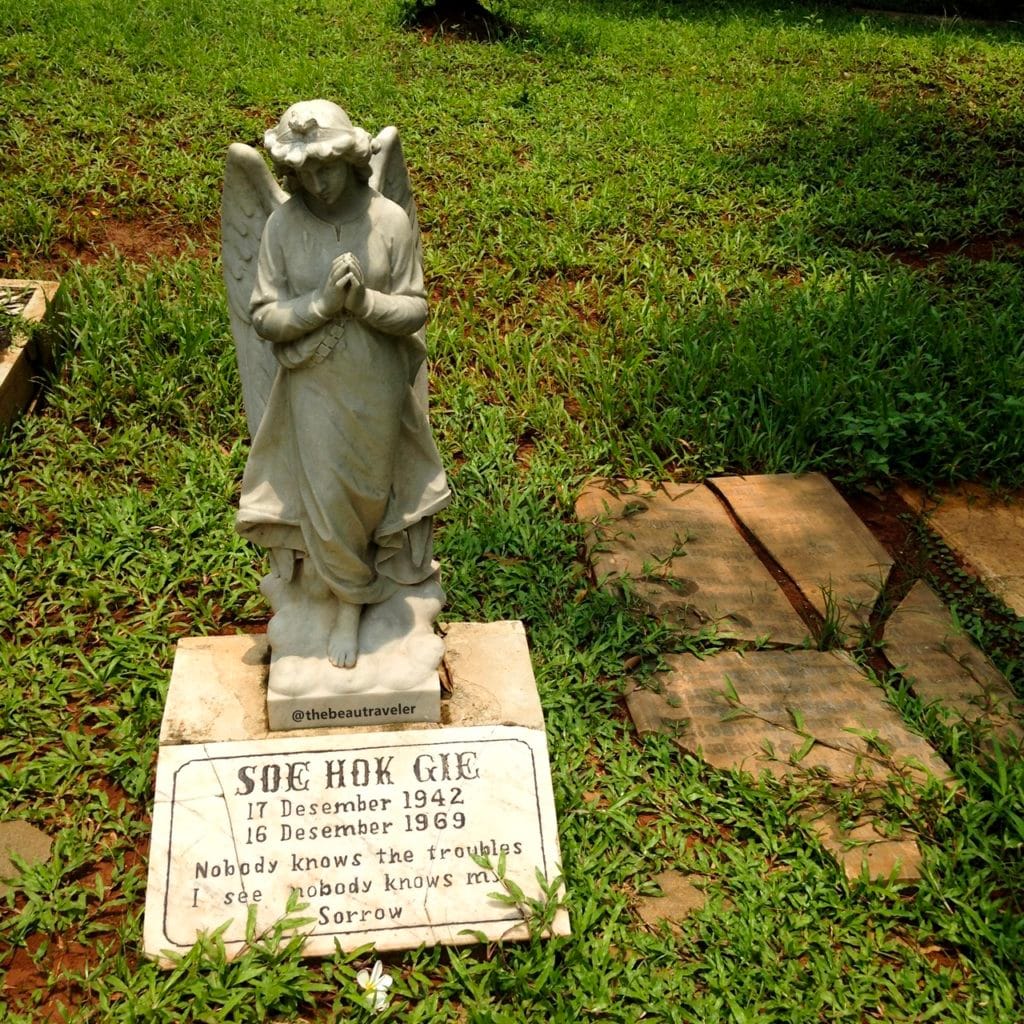

Gie was only 26 when he died during his exhibition to go hiking to Semeru, the highest peak of Java island that's located not too far from Bromo.
Apart from Gie's tombstone, you may also find some other notable names including Olivia Mariamne Devenish. The latter was the former spouse of Thomas Stamford Raffles, who was mostly known as one of the most successful Dutch East Indies governors in the early 1800s.
If you've been to Singapore, you may have seen one of his statues there. You may also have heard his name somewhere as his name is used to identify the stinking corpse lily plant, Rafflesia Arnoldii. The plant is pretty well known in some areas around Southeast Asia, including in Borneo and Bengkulu.
There is an entrance fee to visit Taman Prasasti Museum, which only costs IDR 5,000. But be sure to come before 3 PM, so it's also worth planning to visit Taman Prasasti first before going to Jakarta Kota.
National Museum of Indonesia
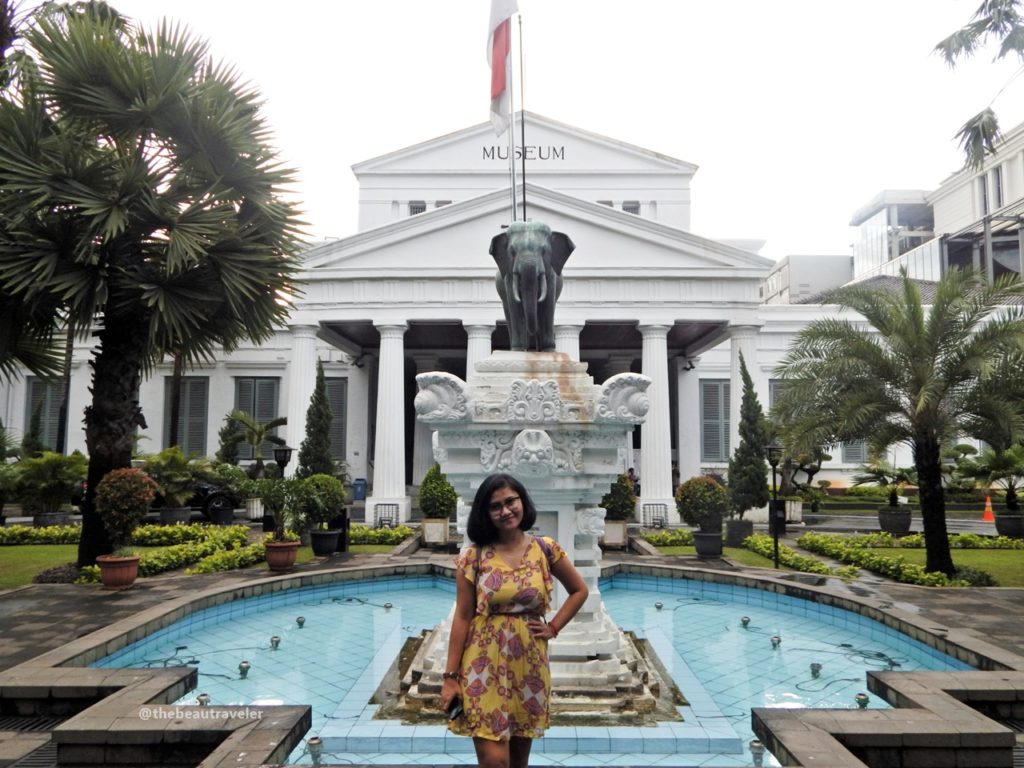
Despite the fact that the official name of the building is “Indonesian National Museum,” locals know it as “Museum Gajah,” or “the Museum of Elephant” in Indonesian.
The reason is that the elephant statue in front of the museum building has become the symbol of the museum itself. The statue was actually a gift from King Rama V, the Siamese (now Thai) King Chulalongkorn, in the late 19th century.
For only IDR 5,000, you can enter the museum to learn more about the country's history dating back to the pre-historic era. The exhibitions include the skull and skeleton from Homo Erectus to Homo Sapiens and also some tools used during these periods.
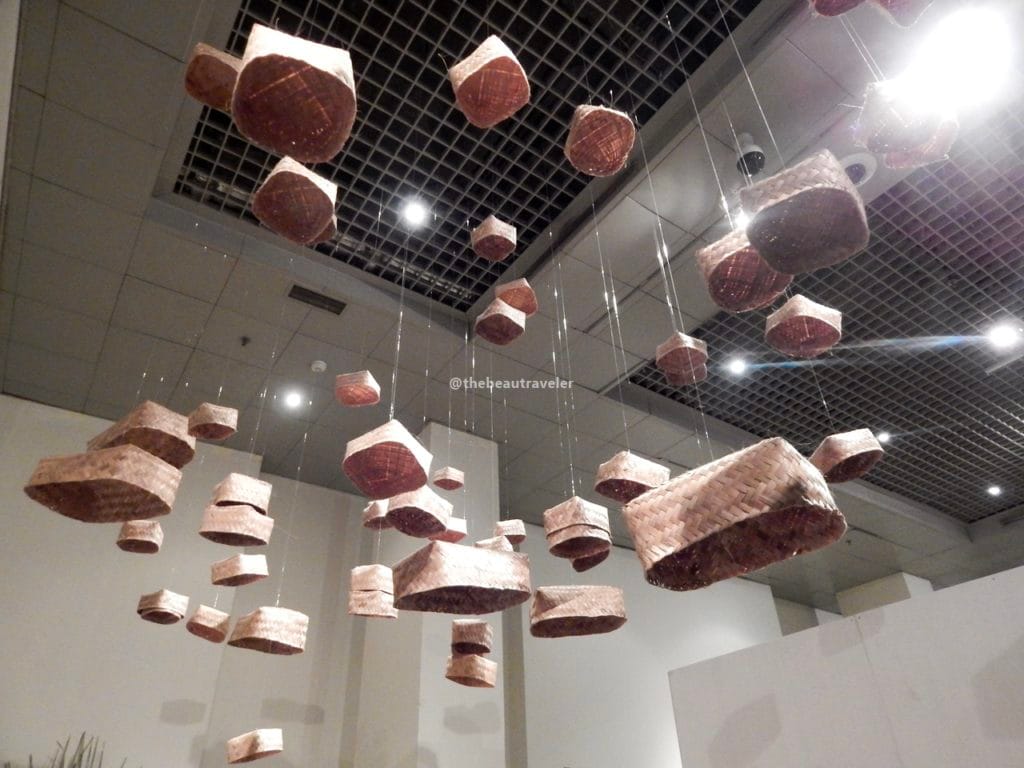
Depending on the time you visit the museum, the National Museum also occasionally hosts some temporary exhibitions that you can attend for free when you're there.
National Gallery of Indonesia
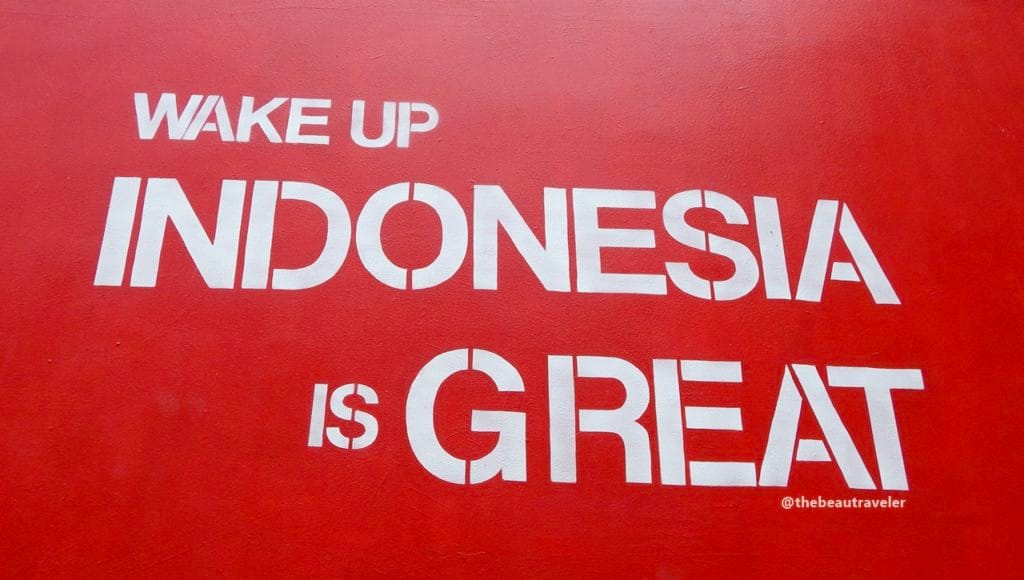
From National Museum, you can go to the National Monument (Monumen Nasional, also known as Monas for locals) and cross the street to the National Gallery building.
The location is exactly across Jakarta train station in Gambir. If you plan to travel by train in Java to other cities like Bandung or Yogyakarta, chances are you'll depart or arrive through this station.
You can visit the National Gallery for free. However, the staff will ask for your ID before giving you permission to enter the building.
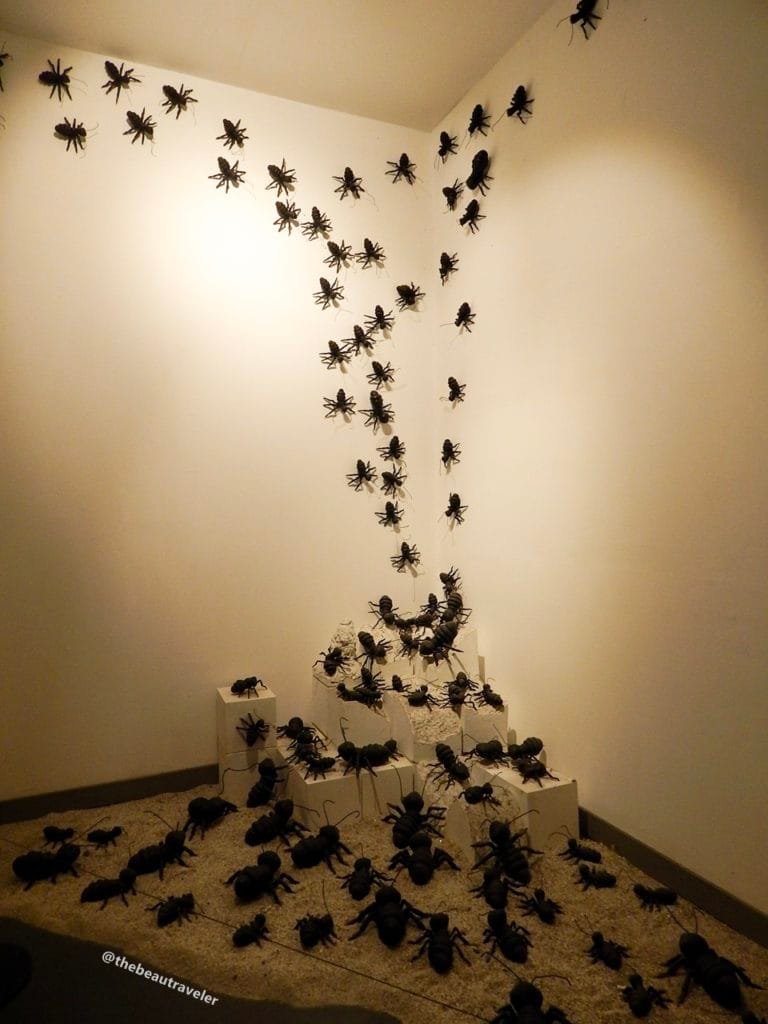
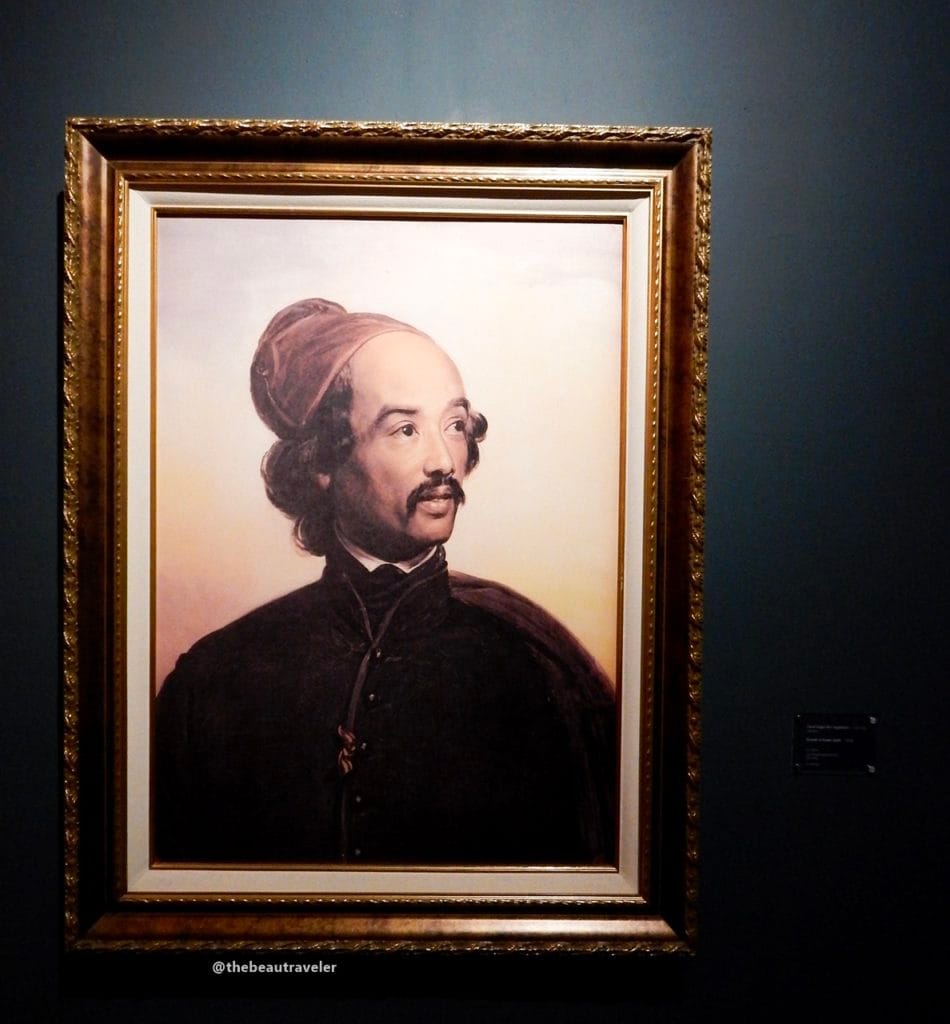
Sometimes, the National Gallery is also used as a venue for some temporary exhibitions that you can attend for a fee. But other than that, you can visit the rest of the area that showcases various art pieces from both local and international artists.
The gallery itself is not big, so an hour should be enough to explore the area while admiring all of those masterpieces there.
Due to security reasons, you are not allowed to bring your bag to the gallery. However, you can take your camera or phone with you so you can take some decent pics or selfies if you want.
Conclusion
Jakarta may be known as the most expensive city in Indonesia, but it's not impossible to explore the city on a budget even if you only have one day to travel around Jakarta.
The places listed on this 1-day Jakarta itinerary are some of the most prominent spots to visit if you only have a short time but want to go to the popular places to visit in Jakarta.
So, have you been to Jakarta? Do you have any recommended place to visit in the capital city of Indonesia? Share in the comment below, and cheerio!


Also read: 50 Unbelievable Things You Can Only Do in Indonesia
Disclaimer:
This post may contain affiliate links. I receive a small commission at no cost to you when you make a purchase using my link.










Pingback: Which One is More Stressful: Climbing the Corporate Ladder or Becoming an Entrepreneur? - The BeauTraveler
Pingback: 5 Reasons to Spend Your Digital Nomad Life in Izmir, Turkey - The BeauTraveler
Pingback: Tune Hotel KLIA Aeropolis: How It Is and What You Need to Know - The BeauTraveler
That’s refreshing guide that you have shared on Jakarta. Especially for a budgeted traveler like me who doesn’t believe in spending way too much on travel and take the free things more 🙂
I love reading about traveling on a budget!